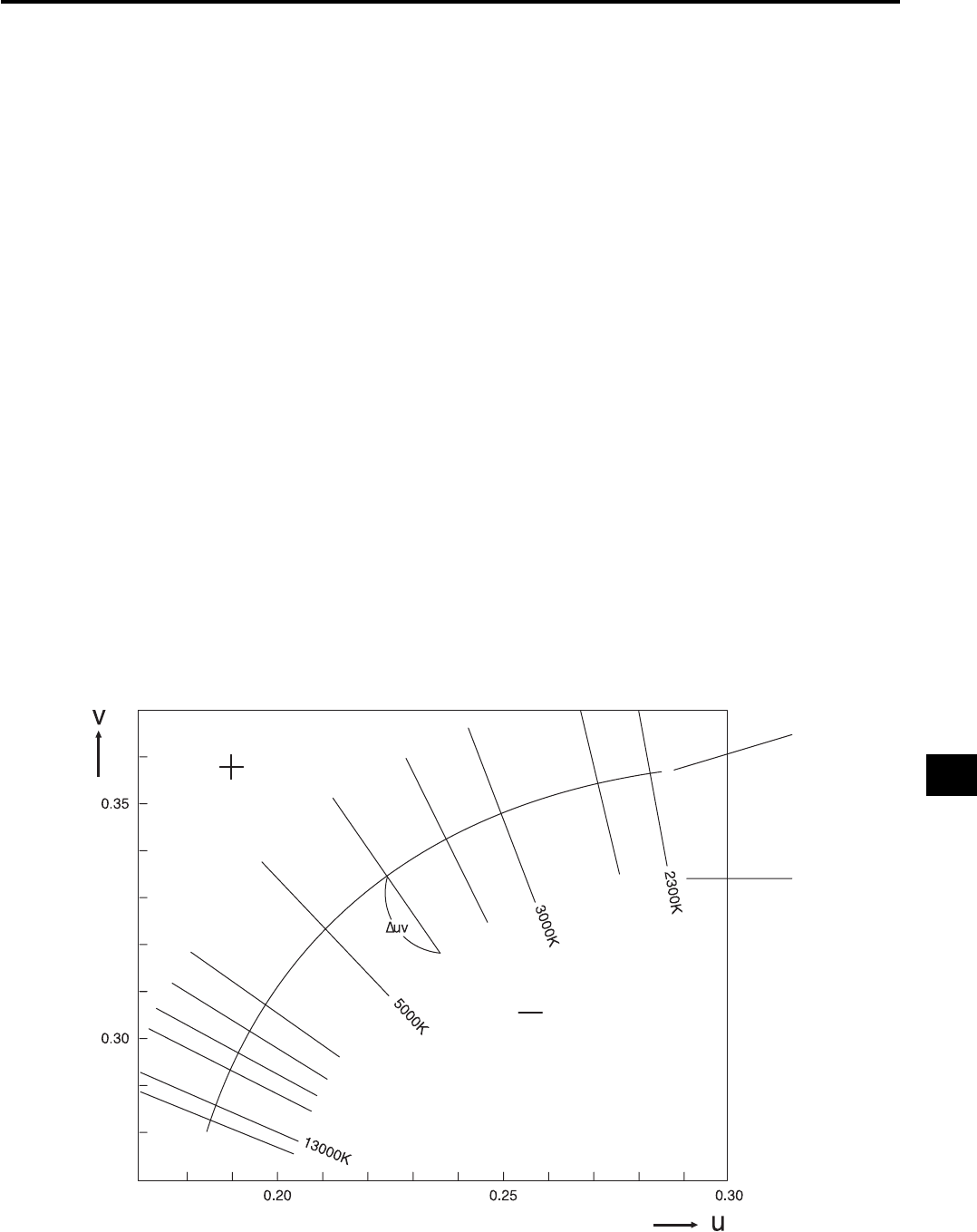
101
Explanation Section
2. About T
∆∆
∆∆
∆uvLv
If the instrument’s measurement mode is set to T∆uvLv, the following values can be displayed in the digital display
section.
• T: Correlated color temperature
• ∆uv : Color difference from the blackbody locus
• Lv : Luminance
In T∆uvLv mode, colors are expressed in the correlated color temperature (T) and color difference from the black-
body locus (∆uv), and the luminance is expressed in Lv.
<
About Correlated Color Temperature T and Color Difference from Blackbody Locus
∆∆
∆∆
∆uv
>
The temperature of a blackbody (an ideal radiator) that has the same chromaticity coordinates as that of a light is
called the color temperature of that light. However, only the colors that are present along the blackbody locus can
be expressed in color temperatures.
Thus, with a widened concept of color temperature, correlated color temperatures are used to express colors that
are slightly off the blackbody locus.
When a color is on the isotemperature line, the color temperature at the point where that line crosses the blackbody
locus is assumed to be the correlated color temperature of that color. The isotemperature line is the line that is
drawn along the chromaticity coordinates of a collection of colors that you feel visually similar to color tempera-
tures along the blackbody locus.
However, since all the colors on the same isotemperature line are expressed by the same correlated color tempera-
ture, it is not possible to express colors using correlated color temperatures only. Thus, to express colors, ∆uv, that
indicates positional relationship with the correlated color temperature T, is also used.
∆uv is signed with “+” if the color is located above the blackbody locus, and is signed with “–” if it is below the
blackbody locus.
Blackbody
locus
Fig. 1 Relationship between Correlated Color Temperature T and
∆∆
∆∆
∆uv
Correlated
color tem-
perature T
Isotemperature lines
}


















